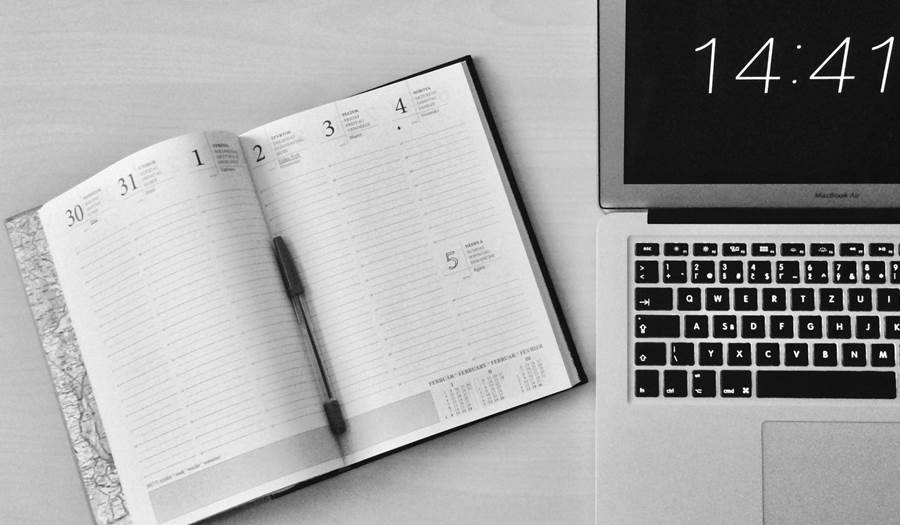
How To Manage Your Time And Thrive
1/14/2020
Are you the type of person who usually procrastinates or runs on their own time? If you find yourself in either of these situations, you might have poor time management skills. Proper time management allows you to put together an organized schedule of your time for different activities.
Having time management skills helps you to create a balance between work, home, and even helps with your finances. If you sometimes feel as if there are not enough hours in the day, it can be overwhelming and stressful. Managing your time properly means you have a ‘plan of attack' to get you through the tasks you need to do and schedule time for the fun activities you want to do.
If you aren't practicing time management skills, don't worry, there's always time to get your life on track. Start this New Year off fresh by learning how to properly manage your time.
Get SMART about your Goals
Setting a SMART goal is often the first step in proper time management. A SMART goal has a time limit and helps you decide what your priorities are. By dividing your SMART goal into manageable steps, you can allocate time and funds to accomplishing your goal that won't leave you overwhelmed or over budget.
Learn more about setting a SMART goal here. A SMART goal is an acronym for Specific, Measurable, Attainable, Realistic, and Timely. For example, rather than setting your goal as, ‘I want to create a budget and save money,' try making this goal a SMART goal. What do you want to budget for? How much do you need to budget? When do I want to have my budget created by? Going through the steps of creating a SMART goal will increase your chances of achieving your goal. A SMART goal will bring structure to your work and financial life keeping you focused on tasks that are important to you.
Read More: Setting A SMART Financial Goal This Year
Prepare for your day the night before
Prepare for the next day the night before by making a list of all you need to accomplish that day. After you write out all of your tasks, assign a value for any that will require you to spend money. Does it fit in your budget? This helps you not only mange your time during the day, but also manage your money. For example, if you plan on grocery shopping for the week, check in on your budget to see if you'll be buying the fillet mignon or ground beef for meat loaf. (If you need to create a budget for yourself, click here.)
Make sure your list and your budget are organized by the priority in which they need to be done, with your most important items at the top of your list. If you can't prepare the night before then make sure to write your daily list first thing in the morning. Keep this list handy all day to help with staying on track.
Once you get into this habit, your days will start to become more structured and you won't feel as overwhelmed or stressed about completing everything on your ‘to do' list.
Read More: Budgeting For Every Dollar
Try to avoid distractions
In today's world it's almost impossible to go a whole day without getting distracted by an amusing video or your friend's texting. The Internet is a constant bombardment of distractions such as social media, online shopping, and messaging.
Do you ever pick up your phone to just check one quick text message, but in reality you end up checking in on everything you possibly can? Before you know it, you've wasted valuable time browsing the web instead of getting done what you had originally intended to.
If you have a project you know you need to get done, put all distractions out of arms reach (yes, we mean your phone!). It may be as simple as avoiding checking your e-mail first thing. Your e-mail can be a big time drain and pull you away from starting your biggest daily tasks.
Avoid Multitasking
The concept of multitasking might make you feel like you are saving time, but in reality you aren't. Having multiple tabs open on your desktop and switching back and forth is something that most of us are guilty of from time to time. You're more liable to get distracted when you multitask. Most of us are guilty of seeing an e-mail notification or a text message and immediately stopping what we are doing to read the message. It's important to not stop the task you are doing to read these messages; they will still be there when you are finished.
Focusing on one task at a time helps you stay on track with your daily schedule and helps you finish the task you are working on faster.
Keep your priorities in check – Eat the Frog!
Mark Twain once said that the first thing you should do each morning is to eat a frog, you can go through the day with the satisfaction of knowing that it is probably the worst thing that you will have to do all day. Your ‘frog' is your biggest, most important task, and not necessarily the one you relish. It's the one you are most likely to procrastinate on if you don't do something about it ASAP. And, if you have two frogs on your list – eat the biggest, ugliest one first!
You might feel like you have to prioritize everything in your life, but some things are just not as important as others. Keep the most urgent and important tasks on the top of your list. These tasks need to be done first and in a timely manner.
While writing your daily priorities, if you find tasks at the bottom of your list to be unimportant, eliminate them or save them for a less busy day. This tactic can also work for your budget. Put what you absolutely need at the top of your budget and everything that is less important at the bottom of your budget. This will help you prioritize not just your time, but your funds as well.
Read More: 5 Money Management Basic Habits For Financial Success
Try the Pomodoro Technique
This time management technique uses a timer to break down your day into 25 minute time slots. The idea is that you set a timer for 25 minutes and focus solely on one task for that time slot. At the end of the 25 minutes, the task is either finished or you take a break for 5 minutes and set the timer for another 25 minutes. There are plenty of apps for Pomodoro Timers in your app store.
This technique is successful because 25 minutes is an achievable length of time to maintain focus and comes with a 5 minute break (to check your friend's texts) before you get back to work. The other benefit of this method is that there are many tasks that can be finished within a single 25 minute time slot. If you use 4 time slots on one task, take a longer break of 15-30 minutes, and then start the cycle again.
Try out some of these time management tips and you'll be a procrastinator no more! Managing your time (and your budget) is easier than you might have thought. Once you start taking that little bit of extra time to plan your days, you'll fall into a routine where less of your time is wasted procrastinating. Now, get to planning!

Katherine Fatta is the Social Media and Content Specialist at Navicore Solutions. She creates fun and informative social media posts that engage the public. She’s also the host of Navicore’s podcast, ‘Millennial Debt Domination.’ You can listen to our podcast here.
You can follow Navicore Solutions on Facebook, X, LinkedIn and Pinterest. We’d love to connect with you.